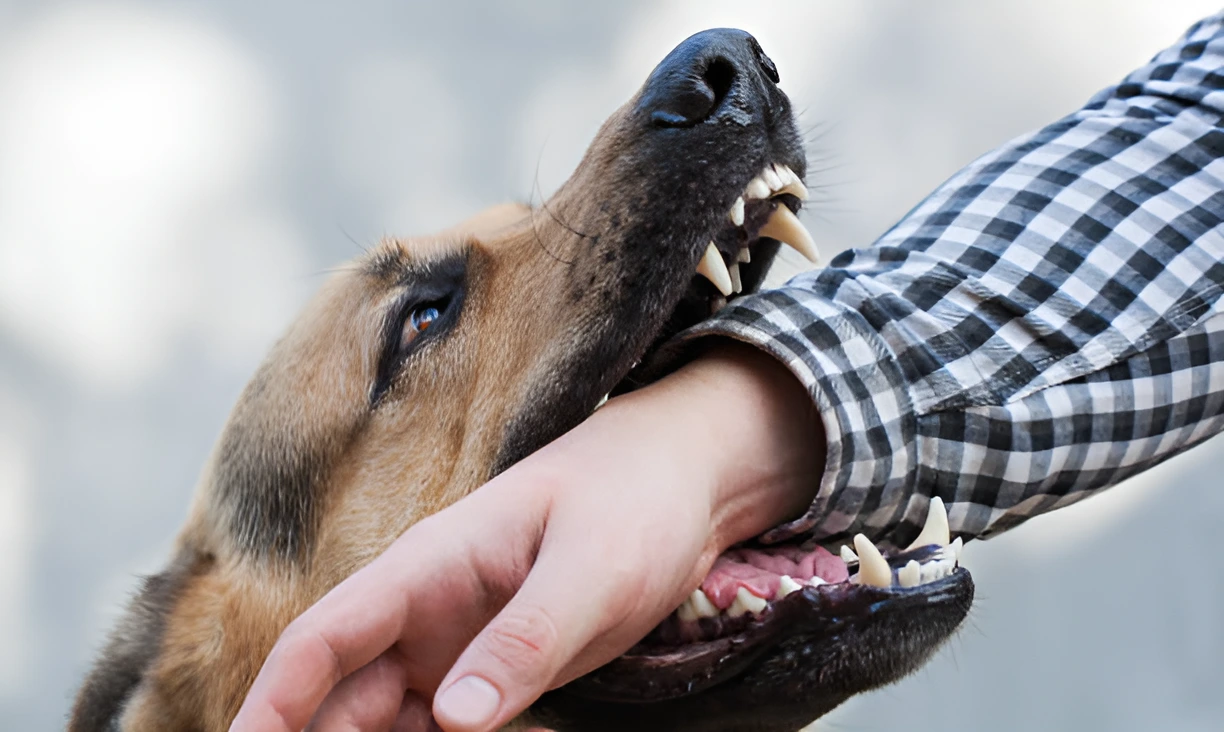Dogs may bite when petted due to fear, pain, overstimulation, or lack of socialization. Petting your dog should be a bonding experience, but if your dog bites you when you pet him, it can be confusing and concerning. Understanding the reasons behind this behavior is crucial for addressing it effectively. In this comprehensive guide, we’ll explore the various factors that can lead to a dog biting when petted, and provide practical tips for preventing and managing this behavior.
Understanding Dog Behavior
Dogs communicate primarily through body language and behavior. Biting can be a form of communication, indicating discomfort, fear, or even playfulness. It’s important to observe your dog’s overall behavior and context to understand why they might be biting.
Common Reasons Dogs Bite When Petted
Fear and Anxiety: Dogs that are fearful or anxious may bite as a defensive mechanism. This can be due to past trauma, lack of socialization, or a naturally timid temperament.
Pain or Discomfort: If your dog is experiencing pain or discomfort, they may bite to protect themselves. This could be due to an injury, arthritis, or other medical conditions.
Overstimulation: Some dogs can become overstimulated when petted, especially in sensitive areas like the belly or ears. This can lead to a bite as a way to stop the interaction.
Lack of Socialization: Dogs that haven’t been properly socialized may not be comfortable with being touched or handled, leading to biting.
Play Behavior: Puppies and young dogs often use their mouths to explore and play. While this is normal behavior, it can be problematic if not properly managed.
Recognizing Signs of Discomfort
It’s important to recognize the signs that your dog is uncomfortable before they resort to biting. These signs can include:
- Tensing Up: A stiff body posture can indicate that your dog is uncomfortable.
- Growling: A growl is a clear warning sign that your dog is not happy with the situation.
- Turning Away: If your dog turns their head away or tries to move away from you, they may be trying to avoid the interaction.
- Lip Licking or Yawning: These can be signs of stress or discomfort.
- Whining or Barking: Vocalizations can indicate that your dog is feeling anxious or threatened.
How to Prevent Biting When Petting
Proper Socialization: Socialize your dog from a young age to different people, environments, and handling. This helps them become more comfortable with being touched.
Positive Reinforcement: Use positive reinforcement techniques to reward your dog for calm behavior when being petted. Treats, praise, and affection can help reinforce good behavior.
Gentle Handling: Always handle your dog gently and avoid rough or sudden movements that could startle them.
Respect Their Space: Give your dog the option to move away if they are uncomfortable. Don’t force interactions.
Regular Vet Check-ups: Ensure your dog is healthy and not experiencing any pain or discomfort that could lead to biting.
Managing Biting Behavior
If your dog is already exhibiting biting behavior, it’s important to address it promptly. Here are some strategies:
Identify Triggers: Pay attention to what triggers your dog’s biting behavior. This could be specific areas of their body, certain types of touch, or particular situations.
Desensitization and Counterconditioning: Gradually expose your dog to the triggers in a controlled and positive manner. Reward calm behavior to help them associate the trigger with positive experiences.
Avoid Punishment: Avoid using punishment to address biting behavior. This can increase fear and anxiety, making the problem worse.
Provide a Safe Space: Ensure your dog has a safe and quiet space where they can retreat if they feel overwhelmed.
Consult a Professional: If you’re struggling to manage your dog’s biting behavior, consider seeking help from a professional dog trainer or behaviorist.
Health and Training Considerations
Regular Vet Check-ups: Regular veterinary check-ups are essential to monitor your dog’s health and address any issues that may arise.
Proper Nutrition: Ensure your dog is eating a balanced diet to support their overall health and well-being.
Mental Stimulation: Provide your dog with plenty of mental stimulation through toys, puzzles, and training exercises.
Obedience Training: Enroll your dog in obedience training classes to teach them basic commands and improve their behavior.
Conclusion
Understanding why your dog bites when petted is the first step in addressing the behavior. By recognizing the signs of discomfort, providing proper socialization and training, and addressing any underlying health issues, you can help your dog feel more comfortable and reduce the likelihood of biting.
The photo featured below the post headline is Credit: dimid_86/istockphoto
I hope you find this post helpful and informative. If Yes’ feel free to share it with your friends!
Frequently Asked Questions
Why does my dog bite me when I pet him?
Dogs may bite when petted due to fear, pain, overstimulation, or lack of socialization. Understanding the underlying cause is crucial for addressing the behavior.
How can I prevent my dog from biting when I pet him?
Proper socialization, positive reinforcement, gentle handling, and regular vet check-ups can help prevent biting behavior. Respect your dog’s space and avoid forcing interactions.
What should I do if my dog bites me when I pet him?
Identify the triggers, use desensitization and counterconditioning techniques, avoid punishment, and provide a safe space for your dog. Consult a professional if needed.
Can health issues cause my dog to bite when petted?
Yes, pain or discomfort from health issues can lead to biting. Regular veterinary check-ups are essential to rule out any medical conditions.

